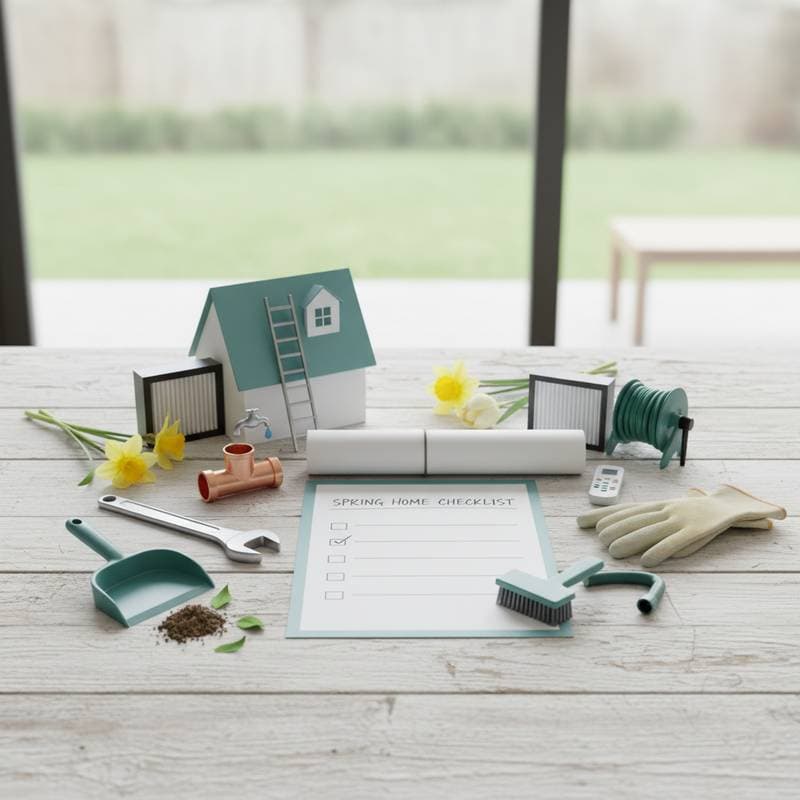Water Damage: What's Truly Covered in Home Warranty
Water damage is one of the most expensive and stressful problems a homeowner can face. Whether caused by a burst pipe, leaking appliance, or an overflowing fixture, it can lead to structural issues, mold growth, and ruined belongings. Many homeowners assume their home warranty will handle the repairs, but coverage for water-related incidents can be more limited than expected. Understanding what is and is not covered helps you avoid unpleasant surprises when you need help most.
This guide breaks down the details of water damage coverage under home warranties. It explains what repairs are typically included, what situations are excluded, and how to ensure you have the right protection for your home.
Understanding Water Damage Coverage
A home warranty is a service contract that covers the repair or replacement of essential household systems and appliances due to normal wear and tear. It is not the same as homeowners insurance, which covers sudden or accidental damage caused by events like storms or floods. Water damage often sits at the intersection of these two protections, which can make things confusing.
What Home Warranties Usually Cover
In most cases, a home warranty covers the mechanical components that cause water damage, not the resulting structural damage itself. For example, if a pipe under your sink bursts due to age or wear, the warranty might pay to repair that plumbing line. However, it will not usually cover the cost to replace damaged cabinets, flooring, or drywall.
Typical covered items include:
- Indoor plumbing systems such as water lines, drain lines, and valves
- Water heaters, including tank and tankless units
- Washing machines and dishwashers, if part of the covered appliance package
- Garbage disposals and related plumbing connections
- Sump pumps or interior water pumps, depending on the plan
The key is that the failure must result from normal use over time, not from neglect, freezing, or an external event like flooding.
What Is Usually Excluded
Home warranties often exclude damage caused by external water sources or preventable conditions. For instance, a warranty will not cover:
- Flooding from rain, groundwater, or a nearby river
- Roof leaks or foundation seepage
- Mold remediation or structural restoration
- Damage due to poor maintenance or improper installation
- Leaks caused by rust, corrosion, or pre-existing issues
If a pipe burst results in soaked walls or warped floors, the warranty repairs the pipe itself, but the cleanup and restoration fall to homeowners insurance or personal expense.
Insert cost comparison table here
A table could show estimated costs for plumbing repairs versus water restoration, helping readers visualize the difference between what a home warranty covers and what it does not.
DIY vs Professional: When to Handle It Yourself
When water damage occurs, homeowners often wonder whether they can handle the issue on their own or if professional help is necessary. Both options have their place, but the right choice depends on the cause, extent, and location of the problem.
When DIY Might Be Reasonable
If the issue is small, such as tightening a loose connection or replacing a worn washer, you might be able to manage it yourself. DIY repair can save time and money, especially for:
- Minor faucet leaks
- Clogged drains that are accessible
- Simple appliance hose replacements
Before attempting any repair, turn off the water supply and check your warranty terms. Unauthorized repairs might void coverage if the issue worsens.
When to Call a Professional
For anything involving internal plumbing, hidden leaks, or significant water exposure, professional service is the safer route. Professionals have the equipment to detect moisture behind walls, identify root causes, and prevent secondary damage like mold. They also provide documentation that may be required for warranty claims.
Hiring a licensed technician is especially important if the water damage stems from a covered system. Most warranty providers require that repairs be completed by authorized contractors to maintain eligibility.
Your Water Damage Questions, Answered
Answers to commonly asked questions from industry experts.
What types of water damage are covered by a home warranty?
Home warranties typically cover water damage caused by mechanical failures of covered systems. That means the source of the leak must be a covered component, such as a pipe or water heater. Secondary damage to walls, floors, or furniture is not covered.
Does a home warranty cover flooding?
No. Flooding from outside sources is considered an environmental event and falls under homeowners or flood insurance, not a home warranty.
If a pipe bursts, who pays for the repairs?
The warranty company usually pays for the pipe repair itself, provided it failed due to normal wear. The homeowner is responsible for cleaning up and repairing any resulting property damage.
Are leaking appliances covered?
If the appliance is part of your warranty plan, such as a dishwasher or washing machine, the repair or replacement of that appliance is typically included. Damage caused by the leak, like warped flooring, is not.
Does a home warranty cover mold removal?
No, mold remediation is almost always excluded. However, fixing the mechanical issue that caused moisture buildup might be covered.
What about roof leaks?
Roof coverage is rare in standard home warranty plans. Some companies offer an optional add-on for roof leak repairs, but it is typically limited to patching small leaks rather than structural replacement.
Can freezing pipes be covered?
If a pipe freezes due to poor insulation or lack of heat, it is usually excluded. Warranties assume homeowners will maintain reasonable preventative measures to avoid freezing.
Do I need to report water damage immediately?
Yes. Most warranty providers require that claims be filed as soon as possible after the issue occurs. Delaying can lead to further damage and potential denial of coverage.
Are sump pumps covered?
Some plans include sump pumps that are part of the plumbing system. Coverage often excludes backup or battery systems.
How can I confirm what my warranty covers?
Review your service contract carefully. Look for sections labeled “systems coverage,” “appliance coverage,” and “exclusions.” Contact your warranty provider if any terms are unclear.
Will my warranty cover water damage from poor installation?
No. Improper installation or code violations are excluded. Always use licensed professionals for new installations to preserve future warranty eligibility.
Can I upgrade my plan for better water coverage?
Many warranty companies offer add-ons or premium plans that expand protection for plumbing and water systems. These upgrades can be valuable if your home has older plumbing or high water usage.
What happens if I try to fix a leak myself?
If a DIY repair causes further damage or violates the service agreement, the warranty provider can deny the claim. Always check the contract before beginning any repair work.
Are slab leaks covered?
Slab leaks, which occur in water lines under a concrete foundation, are sometimes covered under higher-tier plumbing options. Coverage may include repairs but not excavation or structural restoration.
How to Decide: Your Step-by-Step Guide
Step 1: Assess the Situation
Start by identifying the source of the leak. Determine whether it comes from a covered system like plumbing or an external source such as rainwater. This distinction is crucial for understanding whether your warranty applies.
Step 2: Evaluate Your Skills and Resources
If the issue is minor and accessible, you might handle it yourself. If it involves pipes behind walls or damage to multiple areas, professional assistance is safer and often required for warranty claims.
Step 3: Calculate the True Cost
Factor in both the repair cost and the damage cost. A home warranty might save you hundreds on plumbing repairs but will not help with drywall replacement or floor restoration.
Step 4: Review Your Coverage
Check your warranty documents for specific language about water-related incidents. Look for limitations, service fees, and claim procedures.
Step 5: Make the Call
Contact your warranty provider as soon as possible when damage occurs. Provide clear details, photos, and documentation. Quick reporting helps ensure a smoother claim process.
Preparing for Your Water Damage Project
Whether you plan to file a warranty claim or hire your own plumber, preparation helps minimize further damage and cost.
Research and Planning
Before any repair, identify potential sources of leaks and the systems covered under your plan. Keep emergency contact information for your warranty company and a licensed plumber.





